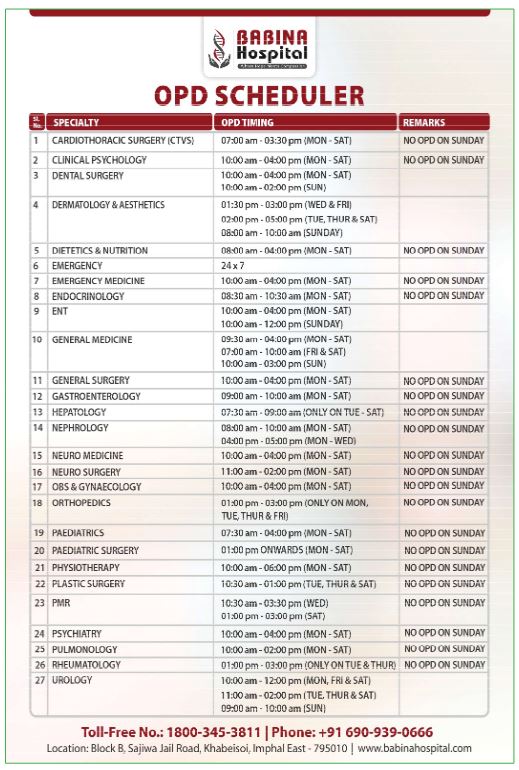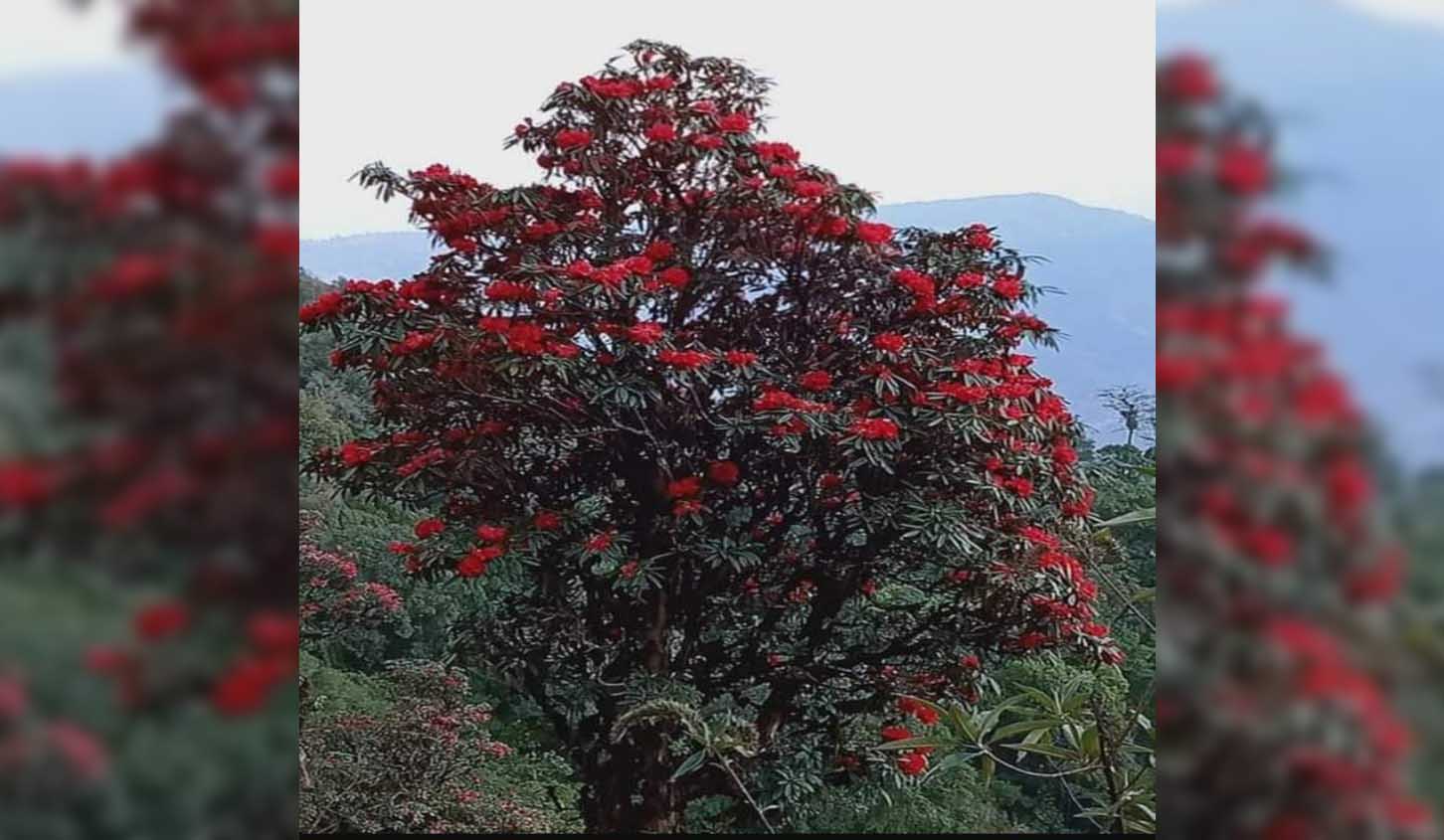Rhododendron arboreum is an evergreen shrub or small tree with a showy display of bright red flowers. It is commonly referred to as ‘’Burans’’, a member of the Ericaceae family. It is widely known as ‘’Kok-tuiwon’’ in the Tangkhul language. The tree was first described by Carl Linnaeus in 1837. Rhododendron is derived from the Greek word ‘rhodo’ which means rose and ‘dendron’ means tree (rose-tree). It thrives in the hilly region with an altitude from 1500 to 3000 metres above sea level. Rhododendron arboreum is cultivated for medicinal, commercial, aesthetic and ornamental purpose in different parts of the world. The tree is considered one of the largest flowering plants in Asia consisting of 1,200 species with the highest diversity found in China (571 cultivars). In India, about 80 species 10 subspecies and 14 varieties are grown. It is commonly found in the states of Jammu and Kashmir, Himachal Pradesh, Uttarakhand, Sikkim, West Bengal (Darjeeling Hills), Arunachal Pradesh, Nagaland, Manipur and Meghalaya. The tree grown in Nepal Lali Gura’s (local name) is considered as the tallest species reaching heights of more than 20 metre.
From March to May, hilly regions in states like Uttarakhand, Sikkim, Manipur, Nagaland, and Himachal Pradesh are ablaze with the flowering of Rhododendron arboreum. The blossoms paint the landscape in vibrant shades of red, pink and white, attracting trekkers, tourists, and nature lovers. Recognized as the state tree of Uttarakhand, the state flower of Nagaland and the national flower of Nepal, it holds both ecological and cultural importance. The genus Rhododendron is one of the popular horticultural plants introduced in Europe’s floricultural industry and it is one of the popular plants in gardens and avenue trees in the world. They are popular for their beautiful flower, foliage and shapes.
Rhododendron arboreum is variable in stature, hardiness, flower colour and leaf characteristics. The trunk is often much branched, crooked, or gnarled. Barks are reddish brown, soft and rough, exfoliating in thin flakes. Leaves are glossy green, oblong-lanceolate, 10-20 cm long and 3.6 cm wide. The thick, stiff and leathery dark green leaves are covered with a thin layer of indumentum ranging in colour from silver to fawn to deep cinnamon, elegant in foliage. Crowded towards the ends of branches, the petiole is covered with white scales when young. The flower’s colour ranges from a deep scarlet, red with white markings, and pink to white. Bearing up to twenty blossoms in a single truss, Rhododendron display a spectacular sight in full bloom. The tree produces a dry woody capsule fruit with varying size and shape but generally oblong-ovoid. The capsule changes colour from green to brown when ripen and minute, dark brown, compressed and oblong seeds are released by a split opening of the capsules.
Scientific studies have confirmed the presence of various bioactive compounds in Rhododendron arboreum that hold several health benefits. Each part of the tree contains different bioactive compounds. Various health beneficial compounds such as alkaloids, tannins and saponins that exhibit many therapeutic activities including anti-inflammatory, anti-diarrheal and anti-cancer potential are extracted from roots. The leaves contain a glucoside, ericolin, ursolic acid, flavone, flavonoid, phenol, glycoside, catechins and anthocyanidins that help relief headache, fever, toothache, cough and lung infection. Due to astringent properties, leaves are used in a poultice, and traditionally, leaves are made into a paste and then applied to the forehead to relieve headaches. Leaves extract of Rhododendron species is also shown to have anti-rheumatoid arthritis activity. The stem of this plant contains alkaloids, steroids, terpenoids, tannins, glycoside and reducing sugar which helps in mitigation of haemorrhage, hay fever and bronchial asthma. The flowers are rich in health essential minerals namely; manganese, zinc, iron, copper, sodium, nickel, cobalt, arsenic and chromium which play a vital role in maintaining the physiochemical processes. The flowers of Rhododendron arboreum contain significant phenolic compounds including flavonoids and non-phenolic compounds such as quercetin, rutin, coumaric acid, saponins, steroids, tannins having anti-diabetic nephropathy, anti-diarrheal and anti-microbial activities. Since flowers contain antidiabetic bioactive compounds, they can be used as nutraceutical or functional food for diabetes patient. Powder dried flowers often fried with ghee are traditionally used for curing blood dysentery. Petals of Rhododendron flower have anti-viral activity. It possesses the potential to be used in the treatment of SAR-Cov-2, since bioactive compounds extracted from the petals have been shown to inhibit the replication of Covid-19 virus. The juice prepared from flowers also helps in mitigating headaches, fever, nose bleeding and stomach aches.
Apart from its medicinal properties, Rhododendron arboreum has many economic values. Pickles can be prepared using flowers due to their sour-sweet taste. The juice commonly called Buranch juice extracted from flowers after the removal of anther and stigma is a popular beverage in Himalayan regions. The juice often mixed with water and sugar is gaining popularity as a refreshing and health benefitting beverage. The Buranch juice is fermented with yeast to prepare wine. The flower and bark of this plant are used as the essential ingredients in cosmetics including various skin care products like face creams, moisturizers and body washes due to their anti-oxidant properties. The flowers also hold religious and cultural significance as an offering in temples and monasteries and decorative garland in weddings and cultural functions. The flower due to its vibrant and unique beauty attracts the tourists making it a potential tourist attraction spot. Timber obtained from this plant is used for making tool handles, boxes, furniture, gift boxes, gunstocks, and packsaddles and is suitable as raw materials for the plywood industry. Oil obtained from leaves and flowers is used as aroma therapy for mitigating stress and anxiety. Honey formed by bees by collecting nectar from Rhododendron arboreum flowers contains grayanotoxin and andromedotoxin as active ingredients. The honey is used for treating cough and colds, as a digestive aid, pain reliever in joints by the indigenous tribal communities of Sikkim, Nepal and Uttarakhand.
Rhododendron is one of the important endemic plant species of Manipur and Nagaland. In Manipur, it is found in the Ukhrul, Senapati and Tamenglong districts. In Ukhrul the tree grows in Shirui hills and its surrounding region. Due to their vibrant, colorful blooms and the scenic beauty added to mountainous landscapes, it attracts tourists and trekkers. For instance, in the recently held state festivals like the Shirui Lily Festival, Rhododendron blooming adds beauty to the landscape surrounding the Shirui hills. In Manipur, the population of Rhododendron has been significantly reducing at an alarming rate due to anthropogenic activities such as deforestation, jhum cultivation, agricultural activities, and climatic change. Besides that, the limited knowledge among local communities about the conservation and economic uses of this plant leads to unsustainable practices. Therefore it has become imperative to take crucial initiative in the conservation of this unique endemic plant. Conservation strategies can be brought by ex-situ and in-situ methods by creating public awareness establishing protected reserve areas, and cultivating in Botanical gardens through seeds, vegetative cuttings, or in-vitro tissue culture techniques. Therefore, educating the local community on medicinal and economic values will bring a positive impact on the conservation of this endemic endangered plant to ensure that its aesthetic charm and economic utility remain intact for future generations.












